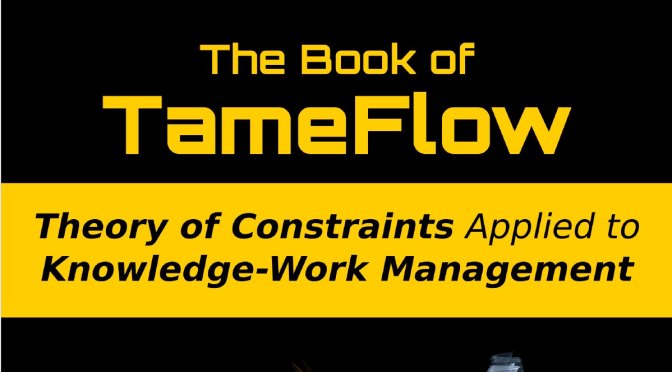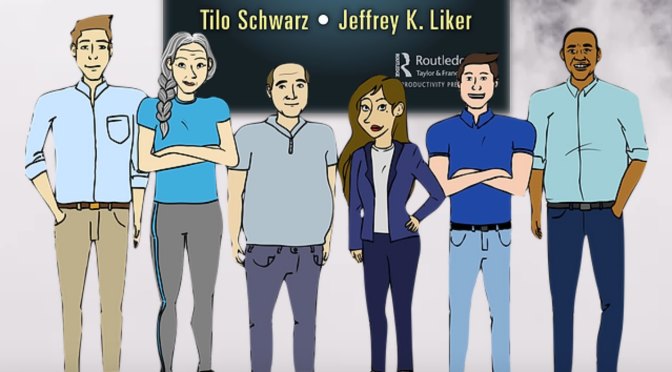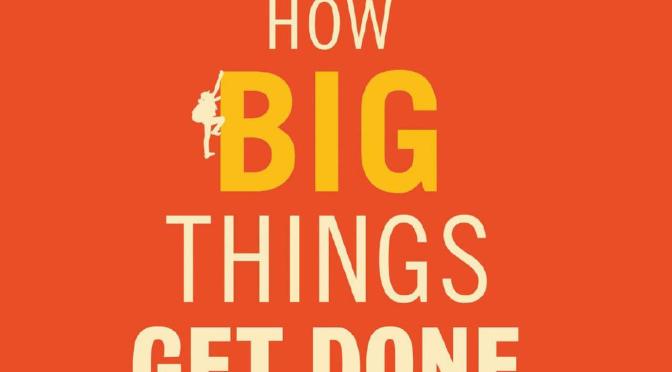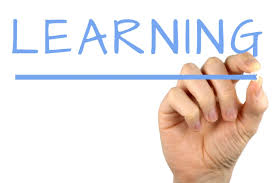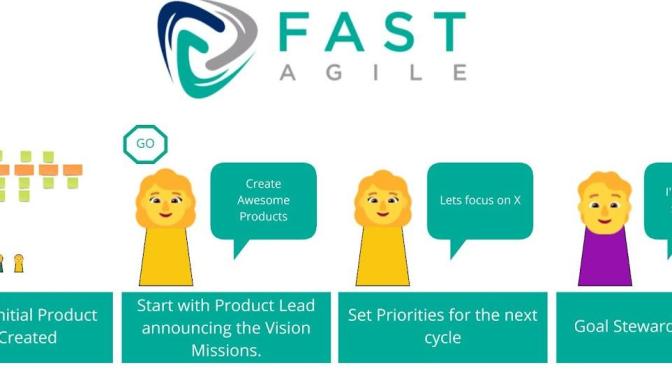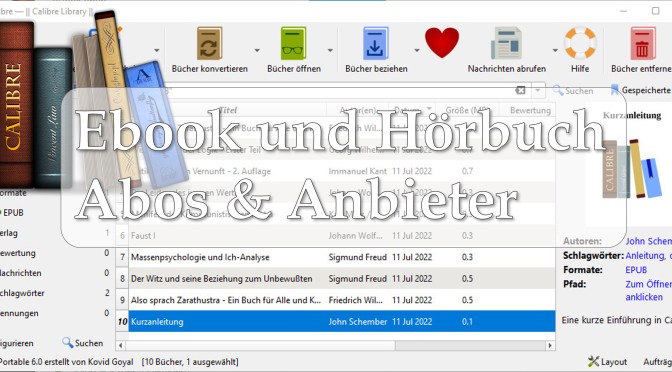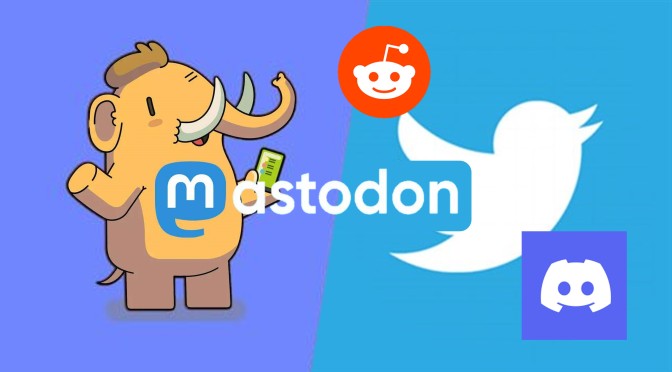* this article is 0 % AI and 100 % content written by myself *
Recommendation – the book is showing how to avoid significant suboptimal work prioritization.
Steve Tendon’s book helped me understand why the usual conventional ways of prioritizing work (ROI etc.) or agile (Cost of Delay, Portfolio Kanbans etc.) lead to results that often are 30 – 40 % below optimum. And are usually “slow”, not providing leading indicators, especially for financial outcome.
TameFlow was published in 2022 on leanpub.com.
This is part I on TameFlow. I can’t possibly cover all important parts here – there is a reason why the book has a good 250 pages. So there may be more articles in the future. Plus: Steve Tendon builds up his reasoning very well. Where this blog article is a “text desert”, his book contains a lot of graphics and diagrams.
The subtitle states that TameFlow is an application of the Theory of Constraints (TOC). And it sure is! If you don’t know TOC yet, don’t miss it. It has extremely positive and real practical consequences on financial performance, delivery time, competetive position across the whole value chain. Plus it can help solve conflicts anywhere, but this is not the focus here.
Steve Tendon builds on the logic of Constraints management (TOC), Mental Models, Patterns and Systems thinking. It improves on “usual” Kanban for IT or knowledge-work. Through the book, I could clearly understand the shortcomings and why, for example
- Column WIP limits are better than “nothing”, but inhibit optimal flow
- Why the same goes for time-boxed approaches (Scrum etc.)
- How to prioritize all kinds of work for maximum productivity and financial throughput
… and a lot more.
It has already made a noticeable impression to improve my own understanding of better prioritization methods and “better agile”, but I will need to continue thinking about the aspects of TameFlow.
So: definitely a valuable recommendation, if you want to improve the way you understand and prioritize work for generating more revenue and reduce overload and missed deadlines. I made extensive notes for myself. If you want to, contact me, e. g. find me on LinkedIn https://www.linkedin.com/in/tspeil/.
If you want to get into more details on the approach, read on!
Read more: TameFlow PrioritizationIn my view, I find it very positive that Steve Tendon is in intensive and constructive exchange with other agile thought leaders like Daniel Vacanti and Eli Schragenheim (who wrote the forewords to the book), Al Shalloway, Wolfram Müller and others. Steve Tendon has a background from Borland, among other companies, before becoming a consultant.
I want to thank them and many other leading thinkers personally for generally being so open and approachable for questions to anyone who wants to learn and contribute, like myself.
Steve Tendon gives the following definition of what any organization must be able to do:
Organizational performance is determined by the organization’s ability to make (the right) decisions (fast – and the abilities on how fast it can be executed). On all levels. That is only possible if everyone has the necessary, non-contraditorial information and Unity of Purpose.
It essentially boils down to 5 decisions:
- When do we start work?
- How do we prioritize and sequence work?
- How do we select work?
- Where do we focus attention, effort, and resources?
- What is the impact on Financial Throughput?
An organization that works ten times faster than the competition can afford to develop and fail nine times before the others are ready to try their first solution. The opportunities to explore, pivot and adapt are afforded only to those who can perform better than their competitors.
The book is the updated version and further methodic development of the 2015 book Hyper-Productive Knowledge Work Performance: The TameFlow Approach … which the author still recommends to read in addition to this book, to get the full context of TameFlow. The 2015 book contains several more detailed explanations and examples.
Probably the biggest real-life application of TameFlow in industry cited in the book is an 8,000 people business unit with 120 teams of an international automotive supplier. There were ca. 70,000 change requests per month and lots of dependencies.
I’ll use TF for TameFlow most of the time in the rest of the article.
Steve Tendon‘s TameFlow Approach obviously is flow-based. And it is about making work and value flow more predictable and stable – thus „tame“. It‘s aim is business agility, or hyper-productivity of the whole organization – not just team agility (which is not sufficient at all).
The TameFlow approach does not use reference processes or practices, roles, artifacts and ceremonies, principles or values, no framework and no maturity levels!
Important elements of TameFlow are Mental Models* (Paradigms) and Management Signals (situations that need attention/decisions – leading indicators serve for efficient Management by Exception, MbE).
*) Mental Model: See P. Senge‘s book on company learning, „The 5th discipline“.
These “real-time” and leading Management Signals over the whole work portfolio allow for reaching the two most important Mental Models:
- Create Unity of Purpose
- Nurture a Community of Trust
The Management Signals allow better decisions and focussed, clear actions on all levels – so promises and expectations usually can be kept! And so trust is very much based on actual ability to deliver.
This requires a stable system. A stable system keeps the amount of work released and active in the system adequate to the rate of delivery of finished work. The Management Signals presented show every part of the organization where to focus attention (problems) and when to release new work into the system.
Every other work that would overload the system and make it unstable is kept waiting before the committed state. Tendon calls this a Disneyland waiting queue.
TameFlow allows data-driven decisions based on 4 key flow metrics. It is empirical. (Lean and Agile people knowing Kanban will be very familiar here.)
Steve Tendon refers strongly to Dan Vacanti’s book “Actionable Agile Metrics for Predictability” for flow metrics.
For example, management will get an overview over initiatives at any level that can look like this:

It is clear to anyone which work items need the most attention.
Some Highlights and Concepts:
- Jeep, Jungle and Journey metaphor – The Journey is work execution, steering the Jeep (Teams/people and their work processes) through the company’s competitive environment (Jungle, unexpected)
- PEST environments – Multiple Projects/Products, unexpected Events, many Stakeholders and many Teams
– Steve Tendon makes the case that “usual” Kanban and Agile only take rather linear workflows into account – not PEST environments, and that they only focus on operational throughput, not having measures for financial throughput.
- “TameFlow Coin Simulation Game” – the book contains a simulation of prioritizing 10 projects with work items of different value each (coins) and five teams. The difference of prioritizing using ROI or COD/CD3 (Cost of Delay) versus taking the availability (limit) of the Constraint into account is made clear.
– Effort is very often not proportional to duration! It depends on the availability of the needed resources. And the limit is: the Constraint! So prioritization needs to take the usage of the Constraint into account, to get the realistically best operational and financial throughput!
- Financial Throughput (TH) is proportional to Operational Throughput (TP)
- CD3/Cost of Delay for example works as CD3 = Value / Effort (total)
- TameFlows Prioritization makes the very relevant improvement:
Throughput Rate TR = Value / Effort (Constraint)
– For “Value”, often relative numbers are taken (just comparing the different options/projects etc.) both in CD3/COD as well as in TR
- Improved Kanban boards – Cycle time and lead time are often pretty “fuzzy” – what times are included, when do we start measuring? This dilutes measurements and signals.
– So TameFlow makes a precise definition of lead time named FlowTime (FT), that begins when work items are committed to be delivered
– For Flow Efficiency (FE), only those times count when an item is actually being worked on: Touch Time (TT) (Work in Process, not just “in Progress”) – and everything else is Waiting Time (WT).
FE = Sum TT / Sum (TT + WT)
– So on Kanban boards, each column is split and measured in 2 semi-columns: “Waiting for” and “In Process” to get accurate WT and TT
– FE (Flow Efficiency) in reality is often only 3 – 7 % of FlowTime!
– Example: if you reduce Waiting Time by 15 % (absolute), your Throughput (~ productivity) will increase by 371 %! This is absolutely realistic.
- These “split”/more detailes boards are called Flow Efficiency Boards and used by all teams – except the one Team that currently has the process step with the one longest queue time: the current Constraint of the whole organization
– The Constraint limits productivity (operational and financial throughput) of the whole system. So this is the only point where to improve and maximize utilization. This team sets the pace for release of new work into all other teams that are connected with the Constraint team!
– For this pace-setting or pull/replenishment, TF uses Drum-Buffer-Rope (DBR) from the TOC. The Constraint team uses a modified board with buffer places and signals – a Drum-Buffer-Rope (DBR) Board
– This mechanism shows that Flow is more than just “Pull”

- Work can be organized in MOVEs – Minimal Outcome-Value Efforts
- For Drum-Buffer-Rope, the boy-scout trip example with “Herbie“, the slowest boy-scout (Constraint), from E. Goldratt’s TOC book “The Goal” is explained
- I liked this acronym of the 5 focussing steps for managing the Constraint: “FOCUS”
(1) Find the Constraint
(2) Optimize the Constraint
(3) Collaborate around the Constraint
(4) Uplift the Constraint
(5) Start again!
Steve Tendon defines the two additional steps:
- „Step (0) is: agreeing on what the Goal is
- „Step (6) is: intentionally redesigning the processes and placing the Constraint knowingly at a certain position. This makes the constraint-management of the system much easier. It allows for the stability of the system
- Full-Kitting – is an ongoing management work-execution activity. Since every task-switching/multi-tasking is “busywork”, but not productive, it is Waiting Time. So productivity hangs on making sure that work, when started, has everything necessary to be delivered
- Management Signals during Work Execution – the book explains how to use signals from TOC’s Critical Chain Management (CCPM) to know which work items have the highest risk of delivering late. For this, a buffer is placed at the Constraint. The buffer burn rate (how much is used) triggers “traffic lights” (green, yellow, red and black = overdue) being used)
- Work Process in the book means the work of one team
- Work Flow means the stream of work through all teams
- Management by Exception (MbE) – TF strives to minimize the amount of signals and communication necessary to those that are needed for knowing where to focus attention
- Difference of Common-Cause-Variation (CCV) and Special-Cause Variation (SCV) – this is not found in IT/Service Kanban or Agile
So … why for example are Column Kanban WIP limits not optimal?
- One of several reasons is, that Column WIP limits in teams‘ Kanban boards mask or distort the signals on the current Work Load situation, because they are fairly fixed!
- Another reason (of several more) is that all teams except for one are not the Constraint – so limits there have no effect on throughput of the whole system
And why are time-boxed approaches not optimal for Flow?
- One of the reasons being that they don’t, well, flow – they break the flow after each iteration/sprint, resetting the state of the management signals through new planning.
I hope you liked this post, and it made you interested in learning more. Please rate and like it! Leave a comment, share the article or follow my blog.
* All our efforts should be constructive. Build a life around you that is as good for everyone else as it is for yourself. Go into exchange and try to learn why people think the way they do. Accept all differences, except for intolerance and violence. Never that. *
